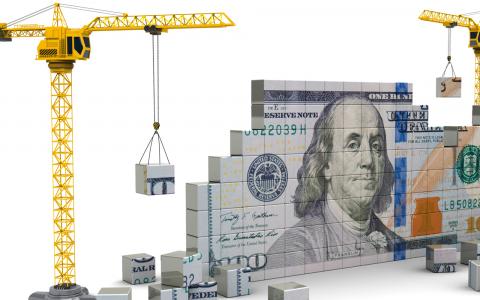
Get real. A lot of portfolios that theoretically provided a smooth 3-5% annual glide broke down this year . . . and even if they get their usual groove back, it's going to take them ages to recover the ground they've lost.
Taking a RMD makes the recovery path even worse, maybe close to impossible. That's the prospect that frustrates older and affluent investors who might not need the income, but are being forced to draw down an account that's already depressed.
To make them happy and rebuild your own AUM numbers, you need more responsive solutions than simply staying the course in a battered 60-40 strategy. Do you have those solutions on your screen now?
Our upcoming Model Portfolio Summit (October 18, register HERE) will gather over a dozen market strategists who aren't afraid to back up their opinions.
Some represent mega-billion-dollar giants like BlackRock and Invesco. Others are boutique managers and a few are outright mavericks with no responsibility beyond their vision of the truth.
Between them, I think we'll get something like a real consensus. But there will still be contrarian voices . . . and maybe they're the ones who have been hiding out in cash waiting to call the bottom and then the all clear.
The list of names and distinguished careers is honestly too long to list here. Consult the registration page for the current lineup.
They'll be talking about what they see driving the market, diagnosing the problem that faces a lot of conservative portfolios that have taken a significant hit this year: an efficient frontier built to avoid big dips rarely makes big leaps.
Can you really imagine the bonds in your clients' portfolios rebounding 15-20% next year to make them whole? That's a massive QE scenario. Otherwise, demand for that debt is not going to justify that kind of price gain.
And we know where coupons are. Those clients own bonds not because they're strong alpha generators but because they historically smoothed the overall glide path when equity fell down.
Equity can recover and race ahead again. Fixed income will at best get back to work at its familiar slow but steady pace.
"Slow but steady" might make the RMDs for especially risk-averse clients. They'll cash the coupons and pay the bills while waiting for stocks to come back.
But that's not going to give them back what they lost. I know a few retirees who don't need the money because they're living on pensions and other investments . . . and yet they're in that conservative strategy as well.
They're looking for a better recovery to get back to where they were a year ago while they're still around to enjoy it. And if they don't make it that long, their heirs inherit less.
Meanwhile, their confidence in the "steady" 60-40 world has evaporated. They know what happens when the theory hits a wall. They're not eager to go through that again . . . or even trust history.
Their Monte Carlo simulation is broken. Shifting them into a lower-risk strategy doesn't exactly inspire confidence that they'll recover what they've lost. All they'll do is lock in the loss and a faint rebound trajectory.
Can you make them happy? I suspect at least one of the strategists we'll be spotlighting has what it takes. Find out which one resonates with your market view on October 18 . . . registration is HERE.



